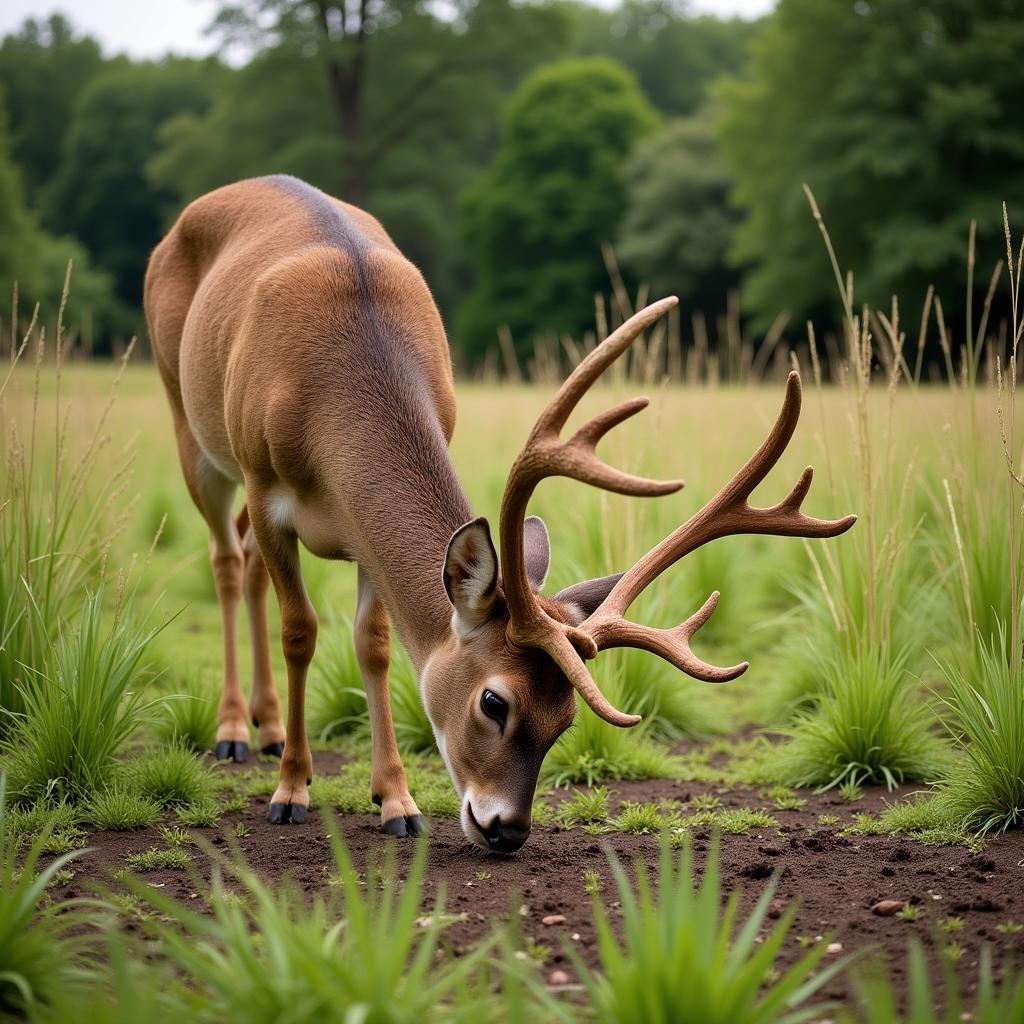Choosing the Best Food Plot Seed For Bad Soil can feel like a daunting task, but with the right knowledge and a bit of planning, you can create a thriving food plot that attracts and nourishes wildlife, even in challenging conditions. This guide will explore the key factors to consider when selecting seed for poor soil, and offer recommendations for varieties that are known for their resilience and ability to flourish where others fail.
Understanding Your Soil and its Challenges
Before diving into seed selection, it’s crucial to understand what constitutes “bad soil” and identify the specific challenges your plot faces. Bad soil can refer to a variety of issues, including low nutrient levels, poor drainage, high acidity or alkalinity, compaction, or a combination of these factors. Identifying the specific limitations of your soil will allow you to choose seeds that are best equipped to overcome those challenges. A simple soil test can provide valuable insights into your soil’s pH, nutrient content, and texture, guiding you towards appropriate seed choices.
 Soil Test Kit for Food Plots
Soil Test Kit for Food Plots
Choosing the Right Seed for Bad Soil
When dealing with less-than-ideal soil conditions, selecting the right seed becomes even more critical. Look for seeds that are known for their tolerance to specific challenges. For example, if your soil is highly acidic, consider clover varieties that thrive in low pH environments. Similarly, if drainage is an issue, opt for seeds that tolerate wet conditions.
Top Seed Choices for Poor Soil
Several seed varieties stand out for their ability to perform well in bad soil:
- Brassicas: These fast-growing plants, including turnips, radishes, and kale, are highly tolerant of poor soil and offer excellent forage for deer and other wildlife.
- Clover: Various clover species, such as crimson clover and white clover, are known for their nitrogen-fixing capabilities, which can improve soil fertility over time. They also provide a valuable food source throughout the year.
- Chicory: This perennial plant is extremely hardy and can tolerate a wide range of soil conditions, including drought and low fertility.
- Cereals: Rye, oats, and wheat can be effective in poor soil, providing cover and forage, particularly during colder months.
Preparing Your Food Plot for Success
Even the best seed won’t perform well without proper preparation. Amending your soil with organic matter, such as compost or manure, can significantly improve its structure and fertility. Consider adding lime to raise the pH if your soil is too acidic. Ensure adequate drainage to prevent waterlogging, which can hinder seed germination and growth.
Tips for Planting in Bad Soil
- Choose the Right Planting Time: Plant during the optimal season for your chosen seed variety to maximize germination rates.
- Seed Depth: Pay close attention to recommended seeding depths, as planting too deep or too shallow can affect germination.
- Weed Control: Implement effective weed control strategies to minimize competition for resources.
Maintaining Your Food Plot
Maintaining your food plot is essential for long-term success. Regularly monitor soil conditions and make necessary adjustments, such as adding fertilizer or lime as needed. Consider overseeding to maintain a dense and productive stand.
 Healthy Deer Grazing on Food Plot
Healthy Deer Grazing on Food Plot
Conclusion
Choosing the best food plot seed for bad soil requires careful consideration of your specific soil conditions and the needs of the wildlife you aim to attract. By selecting resilient seed varieties, preparing your plot effectively, and implementing ongoing maintenance practices, you can create a thriving food plot that provides a valuable food source and habitat for years to come. Remember, with the right approach, even challenging soil can be transformed into a productive and attractive food plot.
FAQ
- What are the most common signs of bad soil?
- How can I improve the drainage in my food plot?
- What is the best time of year to plant food plot seed?
- How often should I fertilize my food plot?
- Can I plant different seed varieties together in the same plot?
- How can I control weeds in my food plot?
- What are some other ways to improve soil fertility?
For further information and resources, please explore other articles on our website, such as “Understanding Soil Types” and “Food Plot Management Strategies.”
When you need support, please contact us at Phone Number: 02437655121, Email: minacones@gmail.com Or visit us at: 3PGH+8R9, ĐT70A, thôn Trung, Bắc Từ Liêm, Hà Nội, Việt Nam. We have a 24/7 customer service team.